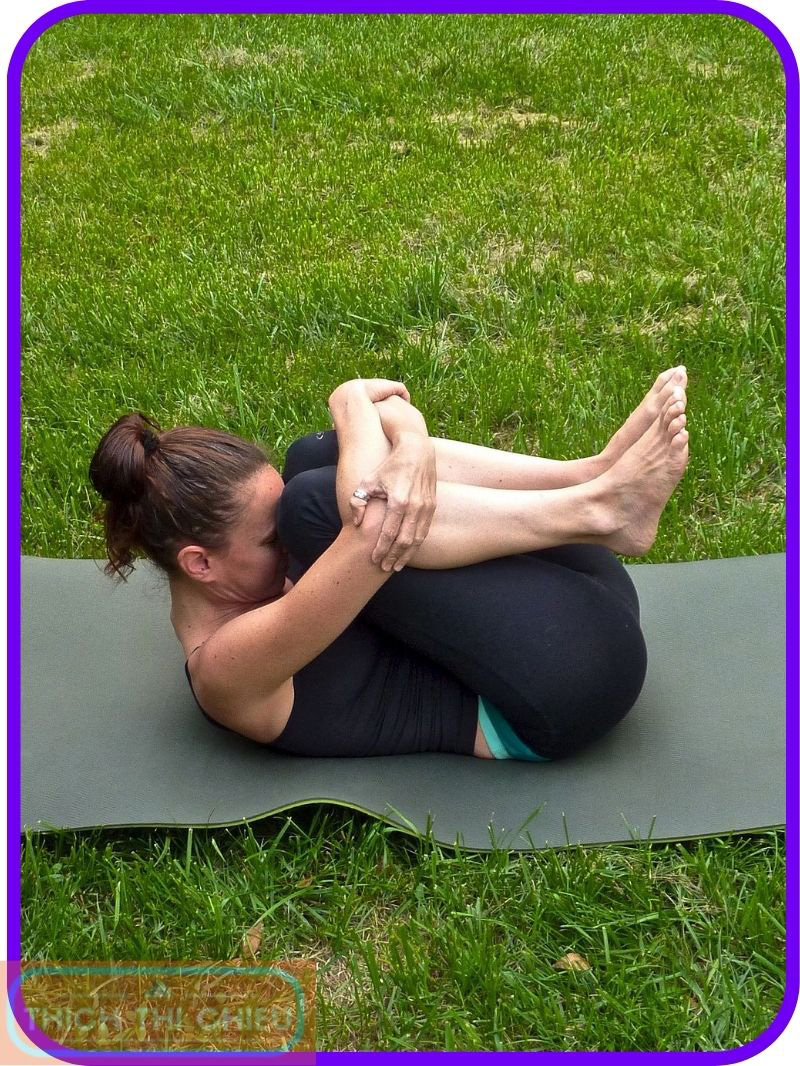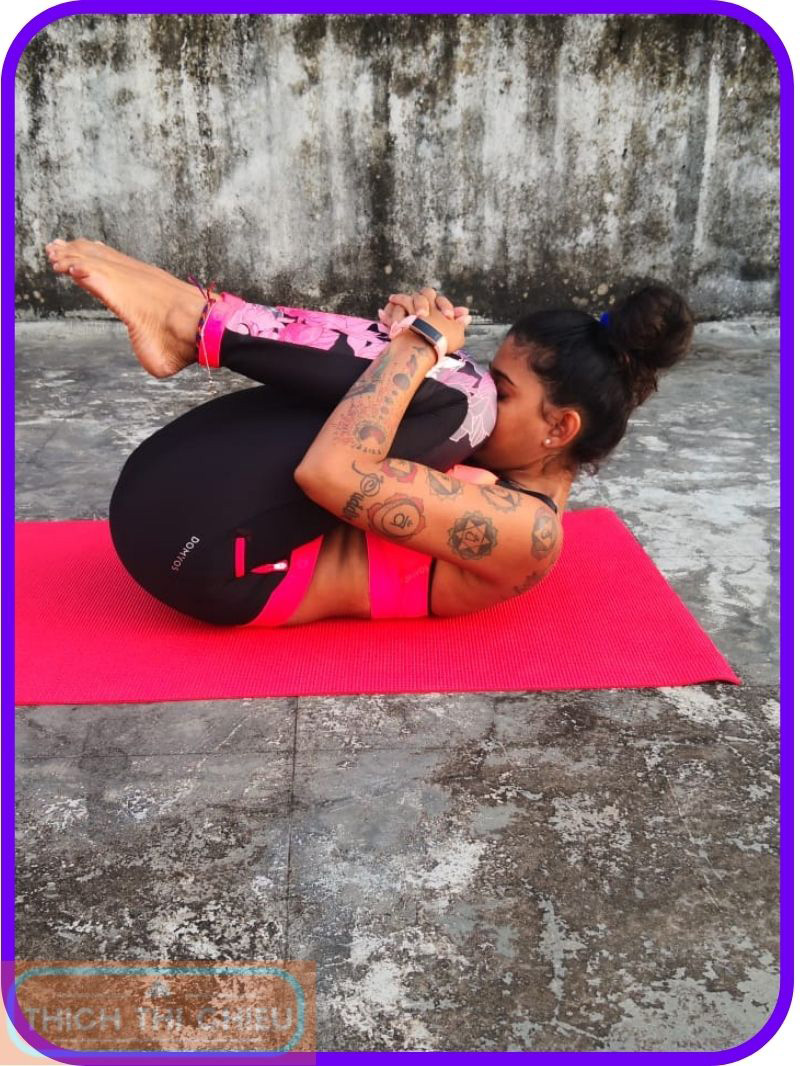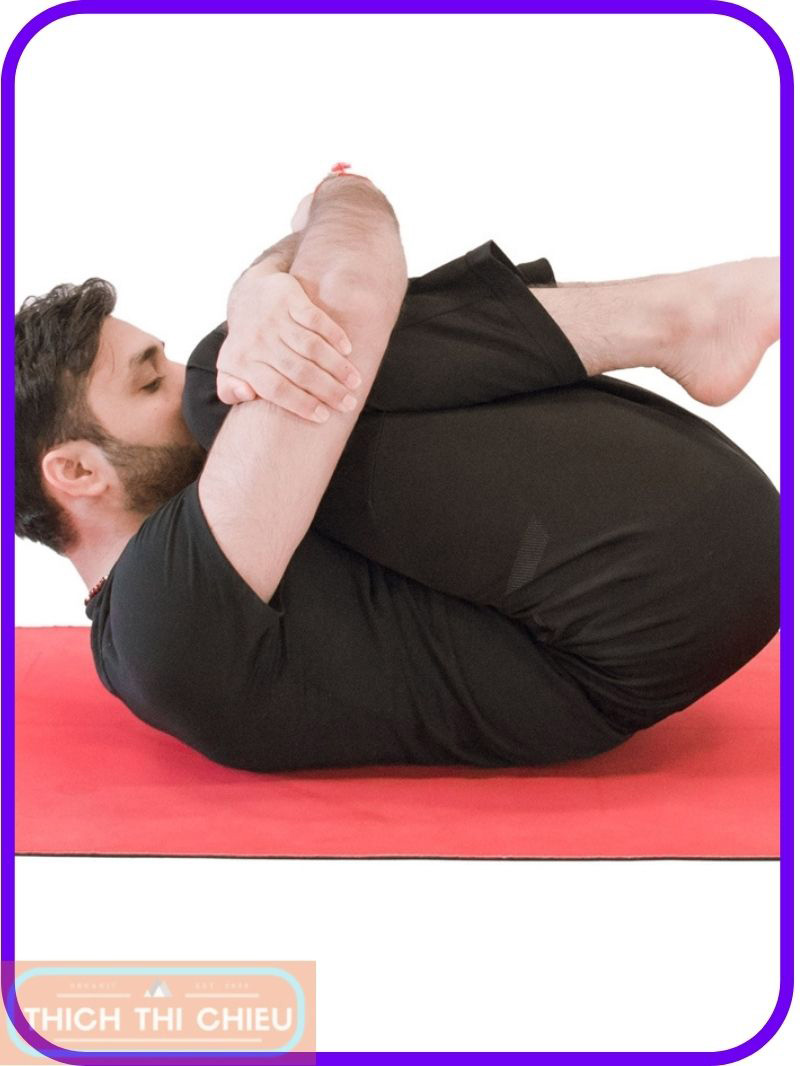In the realm of yoga, Pawanmuktasana, also known as the Wind-Relieving Pose, stands out as a remarkably simple yet effective practice. Often overlooked amidst more intricate postures, this foundational pose holds a wealth of benefits for both physical and mental well-being.
Pawanmuktasana, true to its name, gently massages and stimulates the abdominal organs, promoting digestion, alleviating gas and bloating, and improving overall digestive health. Its gentle stretching and compression of the abdomen also help release stress and tension, fostering a sense of calm and relaxation.
Whether you’re an experienced yogi or a curious beginner, Pawanmuktasana offers a gateway to enhanced digestion, reduced stress, and a sense of overall well-being. Embark on this simple yet profound journey with an open mind and a willingness to explore the transformative power of Pawanmuktasana.
Benefits of Pawanmuktasana
Improved Digestion and Peristalsis
One of the primary benefits of Pawanmuktasana is its ability to improve digestion and peristalsis. Peristalsis is the wave-like muscular contractions that move food through the digestive tract. Pawanmuktasana gently massages the abdominal organs, including the stomach, intestines, and pancreas, stimulating their movement and enhancing peristalsis. This can help to prevent constipation, improve nutrient absorption, and promote overall digestive health.
Relief from Gas and Bloating
Pawanmuktasana is also known for its ability to relieve gas and bloating. Gas is a byproduct of digestion, and it can often cause discomfort and bloating. By stimulating the abdominal muscles and helping to release trapped air, Pawanmuktasana can effectively alleviate gas and bloating.
Strengthening of Abdominal Muscles
Pawanmuktasana also helps to strengthen the abdominal muscles. The pose engages the core muscles, including the transverse abdominis, rectus abdominis, and obliques. As these muscles are strengthened, they provide better support for the spine and internal organs, improving posture and reducing back pain.
Stress Reduction and Anxiety Relief
The gentle stretching and compression of the abdomen in Pawanmuktasana can also help to reduce stress and anxiety. When we are stressed, our bodies release hormones that can cause tension and discomfort in the abdomen. Pawanmuktasana helps to release this tension and promote relaxation. The pose also stimulates the vagus nerve, which plays a role in regulating the body’s stress response.
Enhanced Circulation in the Abdominal Region
Pawanmuktasana can also help to improve circulation in the abdominal region. The gentle massage of the abdominal organs helps to increase blood flow to the area, bringing oxygen and nutrients to the cells. This can improve overall abdominal health and reduce the risk of digestive problems.
Additional Benefits
In addition to the benefits listed above, Pawanmuktasana has also been shown to:
- Improve sleep quality
- Boost energy levels
- Reduce menstrual cramps
- Improve fertility
How to Practice Pawanmuktasana
Here’s a step-by-step guide to practicing Pawanmuktasana:
Preparation
- Choose a comfortable and quiet space where you can practice without distractions.
- Wear comfortable clothing that allows for easy movement.
- Warm up your body with a few light stretches or gentle movements.
Performing the Pose
- Lie flat on your back with your legs extended and arms by your sides, palms facing down.
- Bend your knees and bring them towards your chest, hugging them with your hands. Ensure your lower back remains pressed against the floor.
- Gently rock your body from side to side, massaging your abdomen. This movement helps to release trapped air and gas.
- Take deep, diaphragmatic breaths, inhaling through your nose and exhaling through your mouth. Focus on expanding your abdomen with each inhalation.
- Hold the pose for 30 seconds to 1 minute, gradually increasing the duration as you become more comfortable. You can also try holding the pose for different lengths on each side.
Releasing the Pose
- To release the pose, slowly extend your legs back to the starting position.
- Relax your body and take a few deep breaths.
Variations of Pawanmuktasana
Pawanmuktasana with Leg Extensions
The Pawanmuktasana with leg extensions variation focuses on stretching and strengthening the lower abdominal muscles. It helps to improve flexibility and reduce tightness in the lower abdominal region, which can contribute to lower back pain.
To perform this variation:
- Lie flat on your back with your legs extended and arms at your sides.
- Bend your knees and bring them towards your chest, hugging them with your hands.
- Gently rock your body from side to side to massage your abdomen.
- Extend one leg towards the ceiling, keeping the other leg bent.
- Hold the pose for 5-10 breaths.
- Repeat on the other side.
Pawanmuktasana with Twisting
The Pawanmuktasana with twisting variation targets the side abdominal muscles, promoting core strength and stability. It also helps to improve flexibility in the spine and hips.
To perform this variation:
- Lie flat on your back with your legs extended and arms at your sides.
- Bend your knees and bring them towards your chest, hugging them with your hands.
- Gently rock your body from side to side to massage your abdomen.
- Twist your upper body towards one side, keeping your legs bent.
- Place your hand on the floor behind your shoulder for support.
- Hold the pose for 5-10 breaths.
- Repeat on the other side.
Pawanmuktasana with Rotation
The Pawanmuktasana with rotation variation stimulates the entire abdominal region, enhancing digestion, detoxification, and overall core strength.
To perform this variation:
- Lie flat on your back with your legs extended and arms at your sides.
- Bend your knees and bring them towards your chest, hugging them with your hands.
- Gently rock your body from side to side to massage your abdomen.
- Place your hands behind your head for support.
- Rotate your torso from side to side, keeping your legs bent.
- Hold the pose for 5-10 breaths.
Precautions and Contraindications for Pawanmuktasana
Precautions for Pregnant Women
Pregnant women should consult with their healthcare provider before practicing Pawanmuktasana, particularly during the advanced stages of pregnancy. Certain variations of the pose, such as those involving twisting or deep abdominal compression, may put unnecessary pressure on the abdomen, potentially affecting the growing baby’s position or development.
Avoiding Twisting Variations During Menstrual Cramps
If you are experiencing menstrual cramps, it’s advisable to avoid twisting variations of Pawanmuktasana. The twisting motion can intensify menstrual discomfort and aggravate cramps. Instead, opt for gentler variations that focus on gentle rocking and massaging of the abdomen.
Postponing Practice After Recent Abdominal Surgery
If you have recently undergone abdominal surgery, allow sufficient time for healing before attempting Pawanmuktasana. The pose’s abdominal compression and stretching can put strain on the healing tissues, potentially hindering the recovery process. Consult with your doctor or physiotherapist to determine when it’s safe to resume Pawanmuktasana practice.
By incorporating Pawanmuktasana into your yoga practice, you can cultivate a healthy and balanced digestive system while fostering a sense of calm and relaxation. Hopefully, the above article of TTC has provided you with useful information. If you have any questions or concerns, please leave a comment below.









Leave a Reply